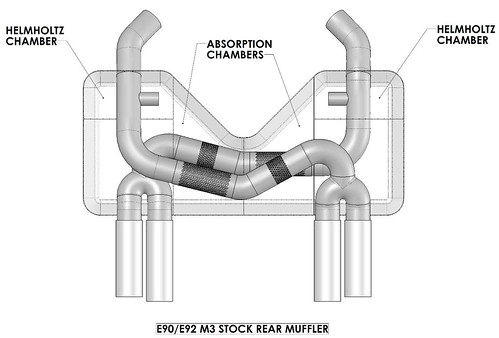Some users believe that this kind of exhaust setup is used for engine output, and others believe it may be used indirectly for aerodynamic gain. It remains to be confirmed.
Nevertheless I have come across a few closely related picture and articles.
Here is and old drawing of the concept on wikipedia. I don't know who or what entity invented it.
Helmholtz resonator exhaust manifold (Autocar Handbook, 13th ed, 1935
http://commons.wikimedia.org/wiki/File: ... 935%29.jpg

An article on Import Tuner. they put it on a 350z where It does quite well In "cat-back" exhaust Vs stock. But it seems not that much better than a regular exhaust... Then again this source is just an import tuner magazine which is not that scientific.
http://www.importtuner.com/tech/impp_10 ... r_fiction/





